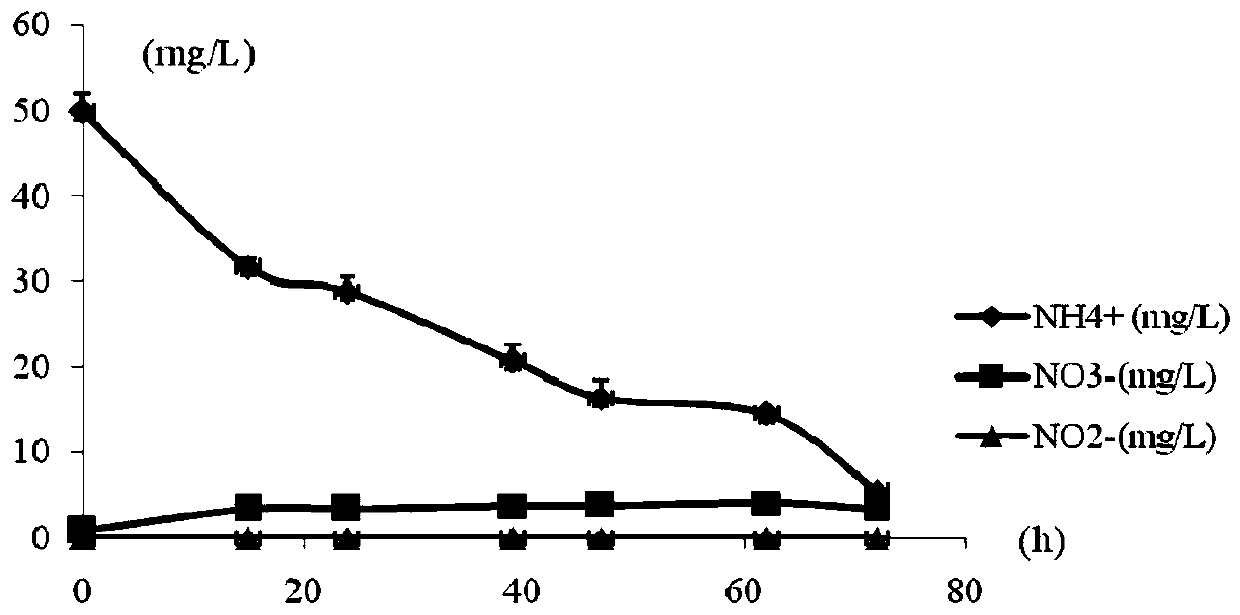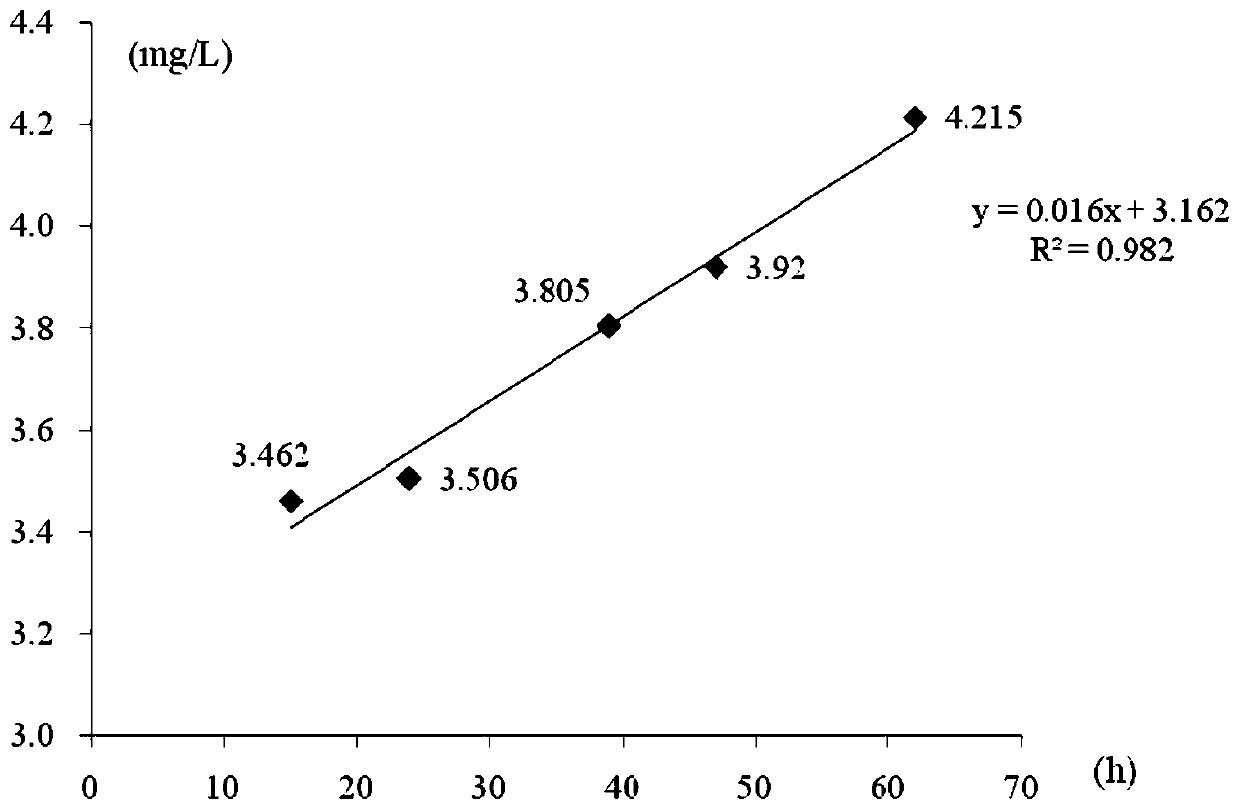Heterotrophic ammonia oxidizing bacteria and application thereof
A technology of ammonia oxidizing bacteria and strains, applied in the field of biological treatment of environmental pollutants, can solve problems such as no research reports
- Summary
- Abstract
- Description
- Claims
- Application Information
AI Technical Summary
Problems solved by technology
Method used
Image
Examples
Embodiment 1
[0045] Example 1: Isolation and identification of Halomonas venusta MA-ZP17-13
[0046] Collect seawater samples from a Penaeus vannamei culture pond in Zhangpu County, Zhangzhou City, Fujian Province, take 2mL of seawater samples collected, and transfer them to sterilized LB (peptone 5g / L, yeast extract 5g / L, sodium chloride (NaCl) 10g / L, pH value 7.4~8.2) enrich culture in the Erlenmeyer flask of enriched culture solution, one week is a cycle, after each cycle, take an appropriate amount of culture solution and centrifuge, discard the supernatant, collect the precipitate, and obtain the bacteria , and then wash the thalline 3 times with physiological saline under aseptic conditions, transfer to fresh sterilized heterotrophic nitrification medium with 2% inoculum size to continue culturing, repeat the cycle, and carry out domestication. Take 2 mL of enrichment medium and transfer it to sterilized selection medium (ammonium chloride (NH 4 Cl) 0.382g / L, sodium acetate (CH 3 ...
Embodiment 2
[0048] Example 2: Performance of Halomonas venusta MA-ZP17-13 Ammonia Nitrogen Removal and Heterotrophic Ammonium Oxidation
[0049] Inoculate Halomonas venusta MA-ZP17-13 with ammonium chloride (NH 4 In the heterotrophic nitrification medium with Cl) as the only nitrogen source, oxygen is introduced to ensure aerobic respiration, and acetylene gas is injected at the same time to inhibit denitrification. Cultivate in a shaker at 140r / min at 10°C, take samples at intervals and detect changes in the concentrations of ammonia nitrogen, nitrate and nitrite. Depend on figure 2 It can be seen that the ammonia nitrogen removal rate of Halomonas venusta MA-ZP17-13 after 3 days of cultivation can reach 88.8%. Depend on image 3 It can be seen that the heterotrophic nitrification rate of Halomonas venusta MA-ZP17-13 was 0.0166mg / L after 3 days of culture -1 .h.
PUM
 Login to View More
Login to View More Abstract
Description
Claims
Application Information
 Login to View More
Login to View More - R&D
- Intellectual Property
- Life Sciences
- Materials
- Tech Scout
- Unparalleled Data Quality
- Higher Quality Content
- 60% Fewer Hallucinations
Browse by: Latest US Patents, China's latest patents, Technical Efficacy Thesaurus, Application Domain, Technology Topic, Popular Technical Reports.
© 2025 PatSnap. All rights reserved.Legal|Privacy policy|Modern Slavery Act Transparency Statement|Sitemap|About US| Contact US: help@patsnap.com



